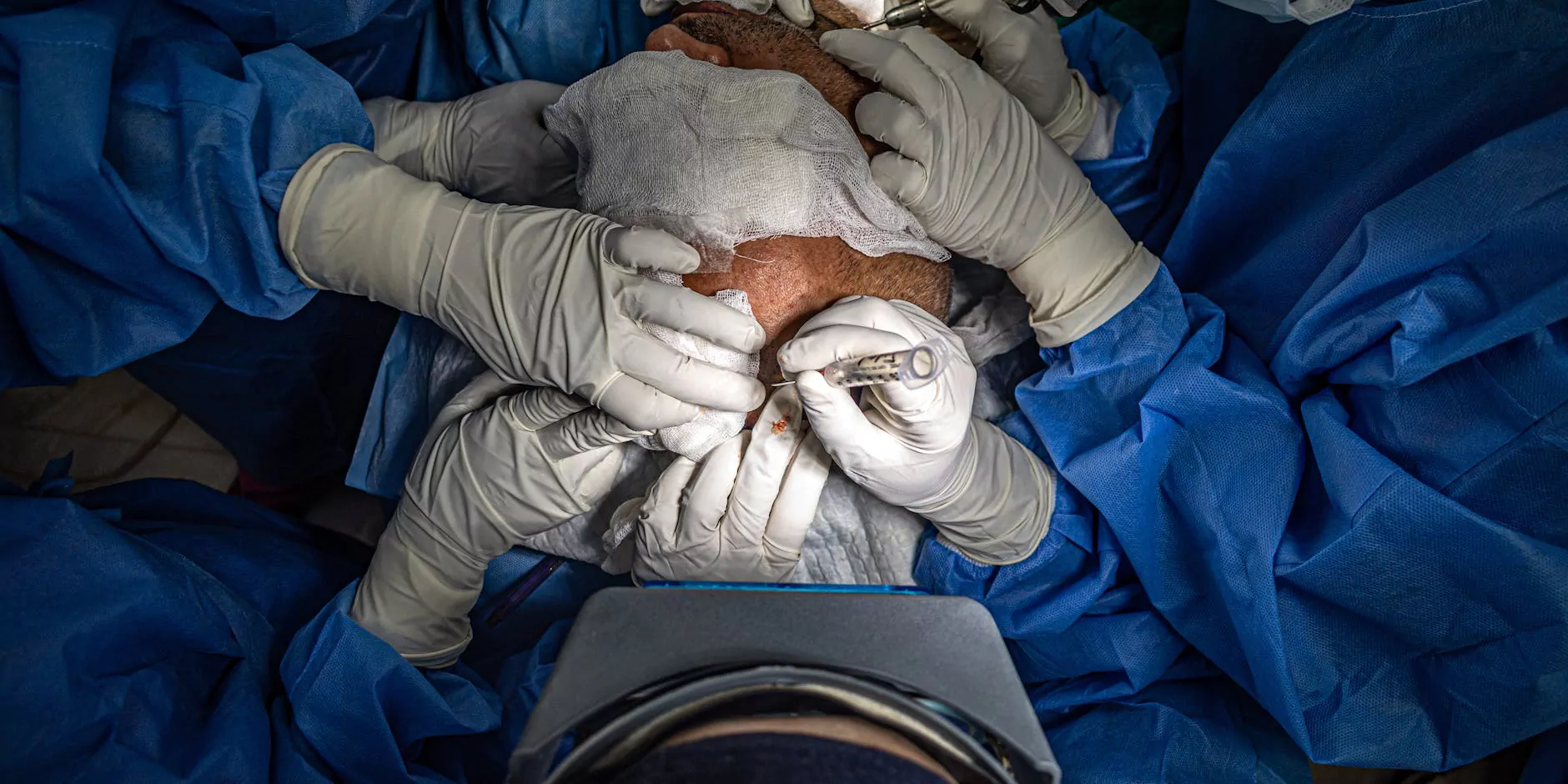The Ultimate Guide to Laparoscopic Excision Surgery for Endometriosis

Endometriosis affects millions of women around the world, causing chronic pain, fertility issues, and other debilitating symptoms. One of the leading surgical options for treating endometriosis is laparoscopic excision surgery. In this article, we will delve into what this procedure entails, its benefits, recovery process, and why it holds a significant place in the management of endometriosis.
Understanding Endometriosis
Endometriosis is a condition in which tissue similar to the lining of the uterus grows outside the uterus, often resulting in inflammation, scarring, and adhesions. Common symptoms include:
- Pelvic pain - often associated with menstrual periods.
- Pain during intercourse.
- Pain with bowel movements or urination.
- Excessive bleeding during periods.
- Infertility issues.
Each woman's experience with endometriosis can differ significantly, making personalized medical attention crucial.
What is Laparoscopic Excision Surgery?
Laparoscopic excision surgery is a minimally invasive surgical technique used to remove endometrial tissue that has grown outside the uterus. The term "laparoscopic" refers to the use of a small camera (laparoscope) that allows the surgeon to view the abdominal organs without needing to make large incisions. This technique offers several advantages over traditional surgery, including:
- Smaller incisions leading to less pain and faster recovery.
- Reduced risk of infection and complications.
- Shorter hospital stay.
- Lower scarring.
The Procedure
Before undergoing laparoscopic excision surgery, patients typically undergo diagnostic tests such as imaging studies or laparoscopy to confirm the diagnosis of endometriosis. The surgery itself usually involves the following steps:
- Anesthesia: Patients are given general anesthesia to ensure they're comfortable during the procedure.
- Incisions: Small incisions (usually three or four) are made in the abdomen.
- Insertion of laparoscope: A laparoscope is inserted through one of the incisions, allowing the surgeon to visualize the abdominal organs on a video monitor.
- Excision of endometrial tissue: The surgeon uses specialized instruments to remove the endometrial growths and any adhesions.
- Closure: The instruments are removed, and the incisions are closed with sutures or surgical glue.
Benefits of Laparoscopic Excision Surgery
The benefits of laparoscopic excision surgery for endometriosis extend beyond the immediate surgical outcomes. Here are some notable advantages:
- Pain Relief: Many patients report significant reductions in pelvic pain after surgery.
- Improved Quality of Life: The relief from symptoms often leads to improved daily functioning and emotional well-being.
- Enhanced Fertility Potential: For women experiencing infertility due to endometriosis, excision surgery can improve chances of conception.
- Reduced Recurrence Rates: Studies suggest that complete excision may lead to lower recurrence rates of endometriosis compared to other forms of surgical treatment.
Recovery Process
The recovery process following laparoscopic excision surgery is generally swift, with many patients returning to normal activities within a few weeks. Here’s what to expect during recovery:
- Immediate Post-Operative Care: Patients typically stay in the hospital for a few hours for monitoring and pain management.
- Rest and Activity Level: It's essential to rest for the first few days, gradually increasing activity as tolerated.
- Follow-Up Appointments: Regular follow-ups with the healthcare provider ensure proper healing and management of symptoms.
- Pain Management: Over-the-counter pain relievers or prescribed medications can help manage discomfort.
Pitfalls and Considerations
While laparoscopic excision surgery is a highly effective treatment, it may not be suitable for all patients. Some considerations include:
- Medical History: Patients should discuss their medical history and any previous surgeries with their healthcare provider.
- Extent of Disease: Severe endometriosis may require a more extensive surgical approach.
- Individual Response: Each patient responds differently, and manage expectations regarding pain relief and fertility outcomes is crucial.
Long-Term Health Outcomes
Understanding the long-term health outcomes following laparoscopic excision surgery for endometriosis can help patients make informed decisions. Research indicates that many women experience sustained relief from symptoms, and improvements in fertility are often reported. However, it’s important to remain vigilant for signs of recurrence, as endometriosis can return in some cases. Regular check-ups with healthcare providers can assist in early detection and management of any new symptoms.
Why Choose Dr. Seckin’s Practice?
If you are seeking treatment for endometriosis, choosing a specialized provider is vital. Dr. Seckin has established a reputation for excellence in the field of gynecology, particularly in the surgical treatment of endometriosis. Patients benefit from:
- Expertise: Extensive experience in laparoscopic surgery.
- Personalized Care: Tailoring treatment plans to individual needs.
- Supportive Environment: A focus on patient education and empathetic care.
Conclusion
Laparoscopic excision surgery for endometriosis is a transformative treatment that can alleviate pain and restore quality of life. Understanding the procedure, recovery, and potential outcomes equips patients to make informed decisions about their health. Every woman’s journey with endometriosis is unique, and selecting the right surgical option plays a pivotal role in achieving the best possible results. For reliable and compassionate care, Dr. Seckin is a trusted choice in the realm of gynecology and obstetrics.
Take the Next Step
If you’re experiencing symptoms of endometriosis, don’t hesitate to reach out for a consultation. Early intervention can lead to a brighter, pain-free future.
laparoscopic excision surgery endometriosis








